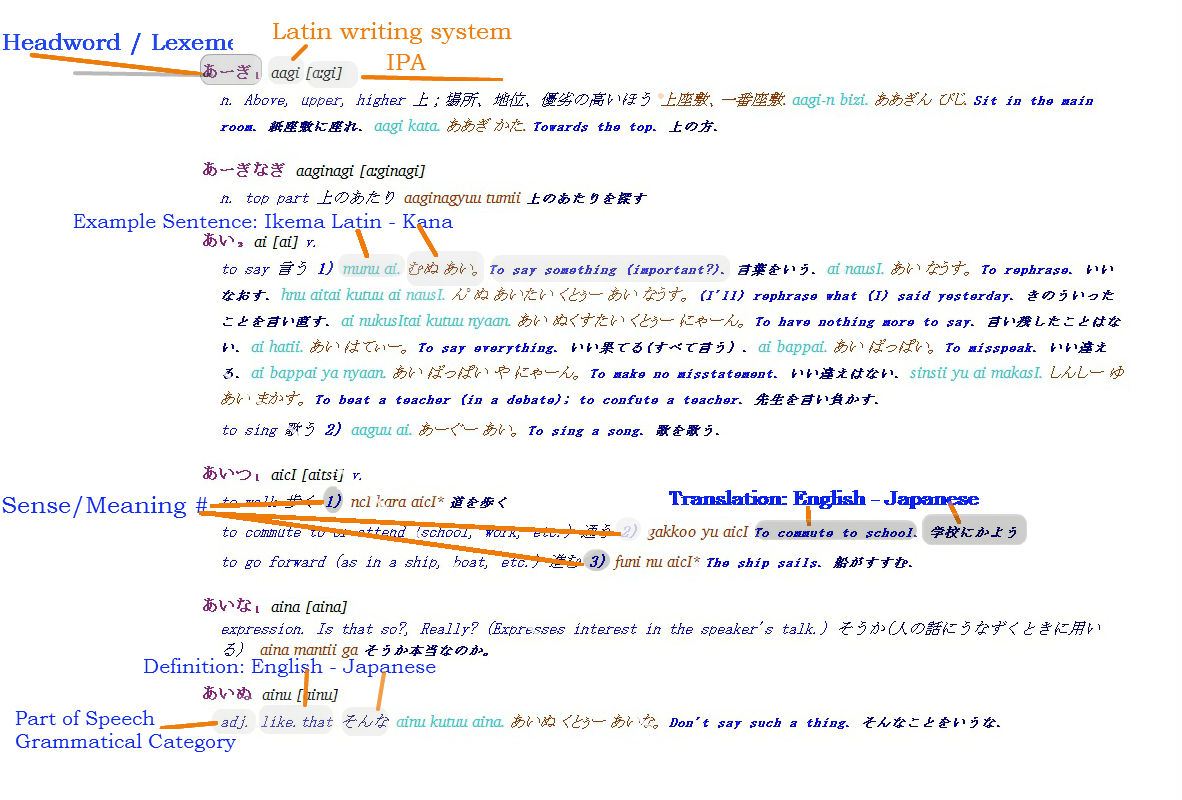Dictionary Entry Layout
When searching or browsing from the vernacular (Miyako-Ikema), the typical entry will have six major parts as follows.
- The headword, which is the first word, will be written in a Japanese kana script, and will be colored a dark red or other color signifying that it is a hyperlink. If you click it, you will be taken to a list of dictionary entries that contain the same word.
- Next will be the Latin orthography for the same word (Romaji).
- Following that will be the IPA transcription in brackets as a pronunciation guide. Both of these will be teal-colored.
- The grammatical category (i.e. part of speech ) will occasionally appear on this line, but that is a bug. It should typically appear at the beginning of the next line in blue italics with a period following. You may wish to visit the List of Abbreviations and Notations to get more info about these and other annotations occasionally within the entries.
- The definition is the 3rd main part. If there are more than one close equivalents in Japnese or English, they will be separated by a comma. The word will be defined in English first (light blue) and then Japanese (dark blue).
- The example sentences start immediately after the definitions. They are presented first in the Ikema Latin orthography (teal colored), then in the Kana orthography (dark orange).
- The sentence translations are the last major section. They will be in blue and bold, with the English translation first (light blue) and the Japanese translation next (dark blue).
- Extra important data such as audio, pictures, notes, semantic domain information, etc. will also occasionally be provided at the end of an entry.
Multiple meanings - If the headword carries more than one major sense or meaning in the target language, it will have multiple definitions. Each will be separated by a number and then a closing parenthesis, like so: 1)... 2)... This is true even if the sense is mostly the same, but the part of speech is different (often a verb and a noun).

Words with the same spelling - Occasionally you will notice that the headword is immediately followed by a small lowered number. The lowered number is used to distinguish what we call homonyms. Homonyms are words that have the same spelling but are unrelated in meaning.
If you would like to learn more, you may find examples from another dictionary helpful: see https://lugungu.webonary.work/dictionary-entries-explained/.

